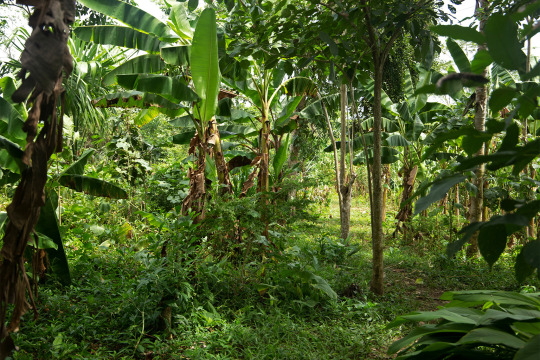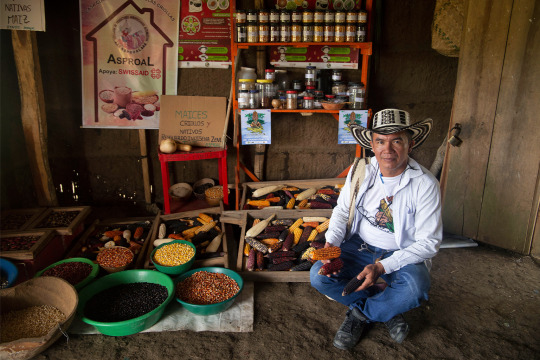#corn plant
Explore tagged Tumblr posts
Text

i’m not dead, the executives in my brain are just NOT functioning lately
have a Rawry with a dracaena fragrans 💚
24 notes
·
View notes
Text

When does a house plant become a home plant? -them
#art#doodle#drawing#ratatheart#rat at heart#plant#plant art#corn plant#my houseplant irl#house plant#home plant#when
15 notes
·
View notes
Text
Columbo S9E2 “Columbo Cries Wolf” (1990)
Fern spotted at 0:31! Looks like another lady fern.

Later in the episode we get, not quite the ultimate combo, but still a delight: Columbo in hip waders amid a forest of Kimberly queen ferns.

Bonus plant: a corn plant receiving enough light.

#s9#columbo#fern spotting#columbo cries wolf#1990s#fern spotted#lady fern#kimberly queen fern#other plants#corn plant
9 notes
·
View notes
Text
June 2024: Around The Garden
Friday's harvest:

The view from the seating area in the backyard garden:

Looks to the left:

Look to the right:

Our corn is starting to tassel:

Just a house sparrow taking a bath:

A running water feature is the second best thing you can put of to attract birds to your yard:


Saturday's harvest:







Adventures in dog walking - blurry bat photo edition. I think this is my best photo of a bat yet. Based solely on what bats are most common in our area, it is probably a Little Brown or a Tricolored bat (aka an Eastern Pipistrelle as they were formerly called... I still call them that because it is the common name I learned growing up & because I just enjoy saying "pipistrelle"):

#garden#gardening#backyard garden#vegetables#homegrown vegetables#homegrown#corn#corn plant#tassel#tasseling#bird#house sparrow#male house sparrow#fountain#attracting birds#bird bathing#flowers#bergamot#monarda#cucumbers#blueberries#strawberry#onions#pole bean#crepe myrtle#bee#beneficial insects#honeybee#aster#butternut squash
16 notes
·
View notes
Text


Many years ago an ex of mine gave me a poor twig of a plant he had been neglecting. His ex had given it to him long before that. This plant is a Corn Plant (Dracaena). This week it flowered. I didn't even know they did that. The flowers only open at night and have a strong smell that not everyone loves. I have decided that this strong smell, a smell that most find annoying, must be the smell of exes past.
15 notes
·
View notes
Text










#house plants#athens#tennessee#monstera deliciosa#flame vilet#black widow spider#arrowhead plants#aloe vera#snake plant#corn plant
2 notes
·
View notes
Text

Here it is in full bloom! Starting at 430 pm through the night! Our house smells like honeysuckle and jasmine every evening. It is so wonderful (and strong).
0 notes
Text
I looked at this and I the first thing I thought was Nico di Angelo.
You have successfully offended Nico
RUN FOR YOUR LIVES
AHHHH

755 notes
·
View notes
Text

I'm still tarot art-ing, I swear! I may tweak this a bit in the future 🤔😌 But for now, here's a peek at the Ace of Wands from my next tarot deck ❤️
Please consider supporting me on Ko-fi: ko-fi.com/rainbowofcrazy
Art shop @ rainbowofcrazy.com
1 note
·
View note
Text



How to Grow and Care for Corn Plant (Dracaena)
Corn Plant Care
Home gardeners usually grow corn plants as large potted plants indoors since they are tropical plants that require climate-controlled conditions. Corn plants do best in bright indoor locations protected against direct sunlight, drafts, and air conditioning and heating vents. These plants also prefer a high humidity environment.
You can put corn plants outdoors during the summer if they are in a sheltered, somewhat shady location. Protect them against strong winds. Bring the plant indoors once the temperatures start to fall into the 60s F.
Light
The ideal indoor location for this plant is near a window with filtered sunlight. Too little light will result in the leaves losing their color variegation and might stunt the plant's growth. Exposure to direct sun can burn the plant's leaves and cause them to wilt. Outdoors, the plant does best in a shadier spot.
Soil
A loose, loamy potting soil mix is the best option for growing corn plants. Make sure the soil has good drainage because its roots don't do well in standing water.
Water
Keep the soil evenly moist but not soggy during the growing season (spring through fall). Reduce watering in the late fall to winter. However, never let the soil completely dry out. Soil that is too wet or too dry will lead to plant health issues.
0 notes
Text
Guest Post by Donald Trump: The Tremendous Houseplants Making America Green Again!
Editors Note: We occasionally feature guest posts from celebrities on this site who love to share their love of gardening with the public. We do not endorse any political candidate. Donald Trump loves houseplants. Ladies and gentlemen, we have a tremendous opportunity to talk about something truly fabulous today: houseplants! Believe me, these plants are fantastic, and they are making America…

View On WordPress
#corn plant#Donald Trump#dracaena fragrans#easy to grow houseplants#ficus#ficus elastica#ficus lyrata#fiddle leaf fig#growing houseplants#Guest Post#houseplant#humor#indoor gardening#monstera#rubber tree#tall houseplants#yucca
0 notes
Text

Went for soil, left with corn. You know.
#garden#gardening#plant#plants#container gardening#vegetable#vegetable garden#corn#corn plant#peaches and cream corn#homesteading
1 note
·
View note
Text
"In response to last year’s record-breaking heat due to El Niño and impacts from climate change, Indigenous Zenù farmers in Colombia are trying to revive the cultivation of traditional climate-resilient seeds and agroecology systems.
One traditional farming system combines farming with fishing: locals fish during the rainy season when water levels are high, and farm during the dry season on the fertile soils left by the receding water.
Locals and ecologists say conflicts over land with surrounding plantation owners, cattle ranchers and mines are also worsening the impacts of the climate crisis.
To protect their land, the Zenù reserve, which is today surrounded by monoculture plantations, was in 2005 declared the first Colombian territory free from GMOs.
...
In the Zenù reserve, issues with the weather, climate or soil are spread by word of mouth between farmers, or on La Positiva 103.0, a community agroecology radio station. And what’s been on every farmer’s mind is last year’s record-breaking heat and droughts. Both of these were charged by the twin impacts of climate change and a newly developing El Niño, a naturally occurring warmer period that last occurred here in 2016, say climate scientists.
Experts from Colombia’s Institute of Hydrology, Meteorology and Environmental Studies say the impacts of El Niño will be felt in Colombia until April 2024, adding to farmers’ concerns. Other scientists forecast June to August may be even hotter than 2023, and the next five years could be the hottest on record. On Jan. 24, President Gustavo Petro said he will declare wildfires a natural disaster, following an increase in forest fires that scientists attribute to the effects of El Niño.
In the face of these changes, Zenù farmers are trying to revive traditional agricultural practices like ancestral seed conservation and a unique agroecology system.

Pictured: Remberto Gil’s house is surrounded by an agroforestry system where turkeys and other animals graze under fruit trees such as maracuyá (Passiflora edulis), papaya (Carica papaya) and banana (Musa acuminata colla). Medicinal herbs like toronjil (Melissa officinalis) and tres bolas (Leonotis nepetifolia), and bushes like ají (Capsicum baccatum), yam and frijol diablito (beans) are part of the undergrowth. Image by Monica Pelliccia for Mongabay.
“Climate change is scary due to the possibility of food scarcity,” says Rodrigo Hernandez, a local authority with the Santa Isabel community. “Our ancestral seeds offer a solution as more resistant to climate change.”
Based on their experience, farmers say their ancestral seed varieties are more resistant to high temperatures compared to the imported varieties and cultivars they currently use. These ancestral varieties have adapted to the region’s ecosystem and require less water, they tell Mongabay. According to a report by local organization Grupo Semillas and development foundation SWISSAID, indigenous corn varieties like blaquito are more resistant to the heat, cariaco tolerates drought easily, and negrito is very resistant to high temperatures.
The Zenù diet still incorporates the traditional diversity of seeds, plant varieties and animals they consume, though they too are threatened by climate change: from fish recipes made from bocachico (Prochilodus magdalenae), and reptiles like the babilla or spectacled caiman (Caiman crocodilus), to different corn varieties to prepare arepas (cornmeal cakes), liquor, cheeses and soups.
“The most important challenge we have now is to save ancient species and involve new generations in ancestral practice,” says Sonia Rocha Marquez, a professor of social sciences at Sinù University in the city of Montería.
...[Despite] land scarcity, Negrete says communities are developing important projects to protect their traditional food systems. Farmers and seed custodians, like Gil, are working with the Association of Organic Agriculture and Livestock Producers (ASPROAL) and their Communitarian Seed House (Casa Comunitaria de Semillas Criollas y Nativas)...

Pictured: Remberto Gil is a seed guardian and farmer who works at the Communitarian Seed House, where the ASPROL association stores 32 seeds of rare or almost extinct species. Image by Monica Pelliccia for Mongabay.
Located near Gil’s house, the seed bank hosts a rainbow of 12 corn varieties, from glistening black to blue to light pink to purple and even white. There are also jars of seeds for local varieties of beans, eggplants, pumpkins and aromatic herbs, some stored in refrigerators. All are ancient varieties shared between local families.
Outside the seed bank is a terrace where chickens and turkeys graze under an agroforestry system for farmers to emulate: local varieties of passion fruit, papaya and banana trees grow above bushes of ají peppers and beans. Traditional medicinal herbs like toronjil or lemon balm (Melissa officinalis) form part of the undergrowth.
Today, 25 families are involved in sharing, storing and commercializing the seeds of 32 rare or almost-extinct varieties.
“When I was a kid, my father brought me to the farm to participate in recovering the land,” says Nilvadys Arrieta, 56, a farmer member of ASPROAL. “Now, I still act with the same collective thinking that moves what we are doing.”
“Working together helps us to save, share more seeds, and sell at fair price [while] avoiding intermediaries and increasing families’ incomes,” Gil says. “Last year, we sold 8 million seeds to organic restaurants in Bogotà and Medellín.”
So far, the 80% of the farmers families living in the Zenù reserve participate in both the agroecology and seed revival projects, he adds."
-via Mongabay, February 6, 2024
#indigenous#ecology#agroforestry#agriculture#traditional food systems#traditional medicine#sustainable agriculture#zenu#indigenous peoples#farming#colombia#indigenous land#traditional knowledge#seeds#corn#sustainability#botany#plant biology#good news#hope#climate action#climate change#climate resilience#agroecology#food sovereignty
1K notes
·
View notes
Text
Columbo S7E3 “Murder Under Glass” (1978)
Boston fern spotted at 04:59!

Bonus plant: corn plant.

Bonus image: this catered lunch. The 1970s, folks.

#s7#columbo#make me a perfect murder#fern spotting#1970s#fern spotted#boston fern#other plants#corn plant#food
7 notes
·
View notes
Text
June 2024: The Last Thursday & Friday
Thursday's harvest:


Friday's harvest:


#garden#gardening#backyard garden#home grown#homegrown vegetables#onions#cucumbers#strawberries#tomatoes#pole beans#flower#red flowers#catchfly#corn plant#dusk#twilight#life in memphis
2 notes
·
View notes
Text






Золотистые колосья сухоцветов в лучах осеннего солнца.Golden ears of dried flowers in the rays of the autumn sun.
#русский tumblr#Россия#осень#природа#зеленая природа#поля#травянистое растение#сухоцвет#колосья#трава#деревья#облака#солнечные лучи#мои фото#Russia#autumn#nature#nature photography#beauty of nature#fields#trees#grass#herbaceous planting#dried flower#ears of corn#sun rays#clouds#my photos#original photography#photographers on tumblr
239 notes
·
View notes